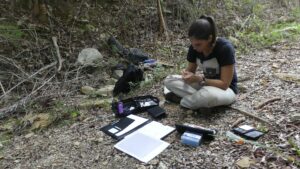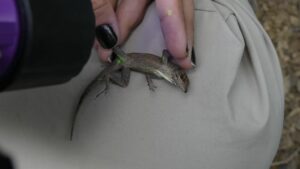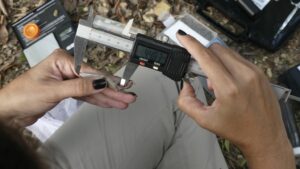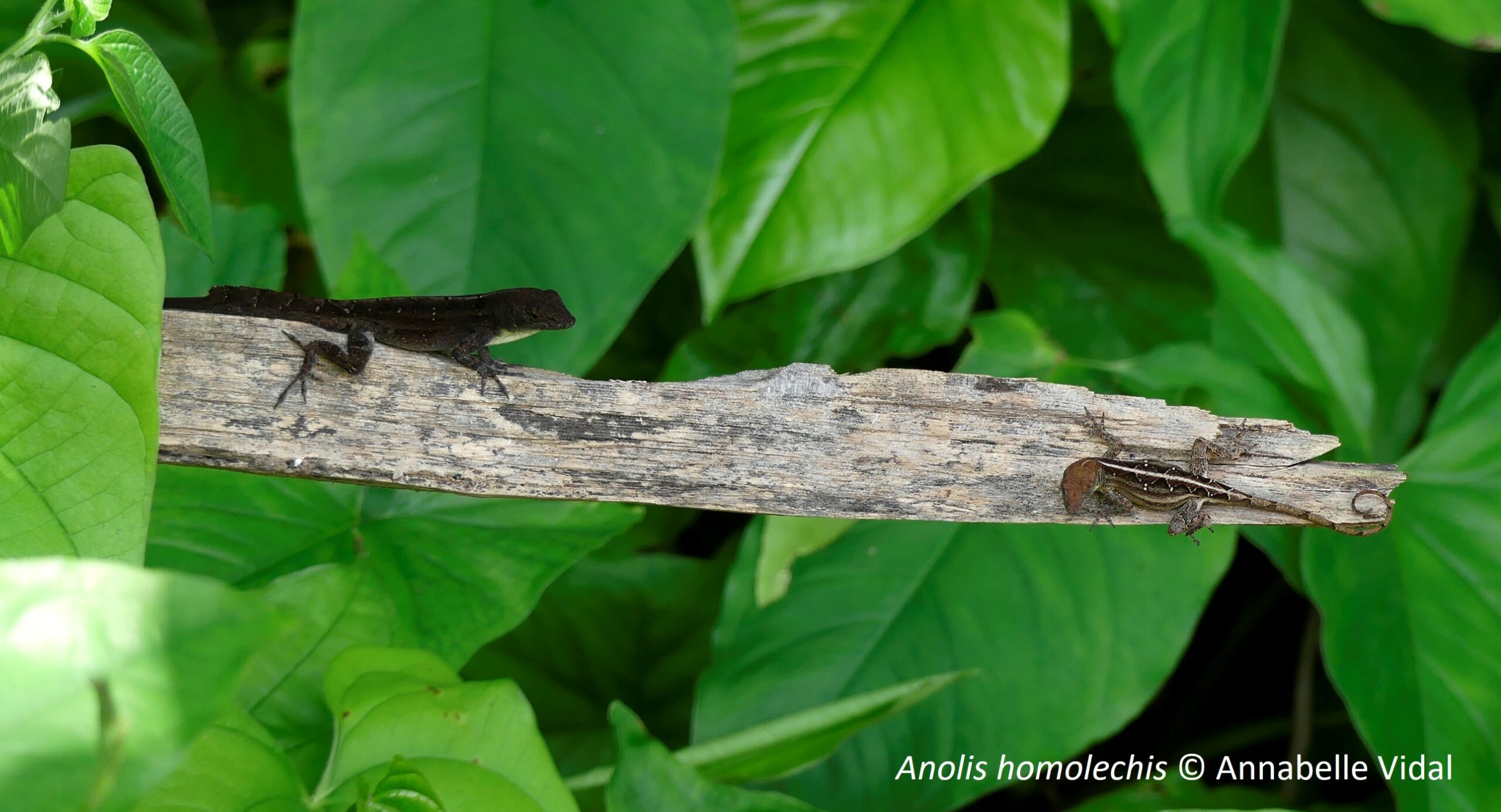Urbanization is a growing phenomenon, with many consequences on animal species. In Cuba, the lizard Anolis homolechis, endemic to the island, is found in both natural and suburban environments. A comparison between these two habitats, however, shows variations in the lizard populations.
To understand the effect of the type of environment on the anole species A. homolechis, Annabelle Vidal went to the field for an ambitious study. More than 800 individuals were captured, in four different locations: two protected natural areas in Cuba and two areas surrounding cities.

Annabelle working on the field
Every month for a year and a half, she visited each of these sites and captured all the anoles she saw there. Unlike most studies on anoles, both males and females were studied. The animals were measured: length of the body, size of the femur and body mass. The sex of the individuals could be determined based on the presence of a dewlap, a membrane of skin that is found only under the throat of males. Age was also estimated (adult vs. subadult for males, mature or immature for females). Finally, the base of the tail was inspected to determine if the lizard had undergone an autotomy during its lifetime. This defence mechanism allows some lizards to get rid of their tail, distracting the predator and allowing the lizard to escape. All the individuals captured were marked thanks to a unique combination of coloured tags that were injected under the skin, allowing each lizard to be individually recognized and thus avoiding considering the same individual several times.

Lizard with coloured tags under its skin
The analysis of the results shows that lizards in suburban areas are generally larger than those in natural environments. They also have, for equal size, longer legs and higher weight, the latter indicating a better body condition. On the contrary, much more lizards from suburban environments seem to have undergone autotomy compared to the natural forests.
All these differences can have several explanations. The size of the legs could result from the phenotypic plasticity of the animals: lizards would develop longer legs that are more adapted to an environment with broad surfaces such as manufactured structures. Their better body condition could be the result of an easier access to food resources. Indeed, the accumulation of garbage around cities tend to attract insects, providing a food supplement for the reptiles. Their larger size would directly result from their better body condition, directly improving their survival and thus allowing them to reach larger sizes compared to forest lizards.

Measuring of a lizard
The more common tail loss in lizards from suburban environments compared to forest lizards may have a counterintuitive explanation. It is indeed possible that predators around cities, such as domestic cats, are simply less efficient than wild predators in catching their preys, such that more lizards manage to escape, alive but without a tail.
This study is one of the few that have investigated the effect of urbanization on an endemic species rather than an invasive species. It confirms certain results observed in other species of anoles. The large number of individuals studied, and the consideration of individuals from both sexes, led to new results. In particular, differences in sex ratio and sexual dimorphism were also highlighted between the two environments. Future studies could confirm the effect of habitat on these two factors while shedding more light on the reasons for these differences. The impact of habitat on other parameters, such as survival and genetic differentiation between populations, is currently being analysed by the same author.
About the author
Annabelle Vidal is currently finishing her doctoral thesis on the maintenance of populations of the lizard Anolis homolechis in suburban environments, with the financial support of Caribaea Initiative. She also participates in the MERCI project on invasive exotic reptile species, in particular through the training of partners from the various territories concerned in the study of anole lizards, and the participation in monitoring sessions for invasive species.
References
Vidal, A., Iturriaga, M., Mancina, C.A. & Cézilly, F. (2022). Differences in sex ratio, tail autotomy, body size and body condition between suburban and forest populations of the Cuban endemic lizard Anolis homolechis. Urban Ecosystems, https://doi.org/10.1007/s11252-022-01259-y.

